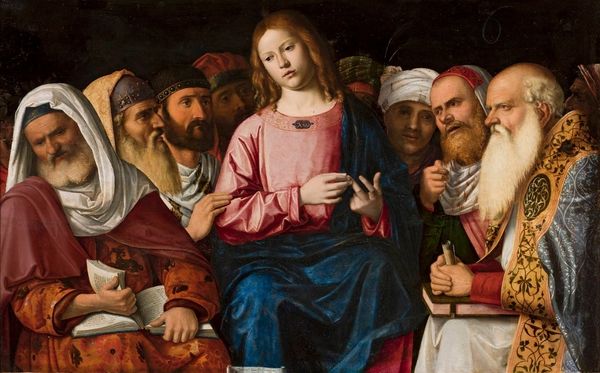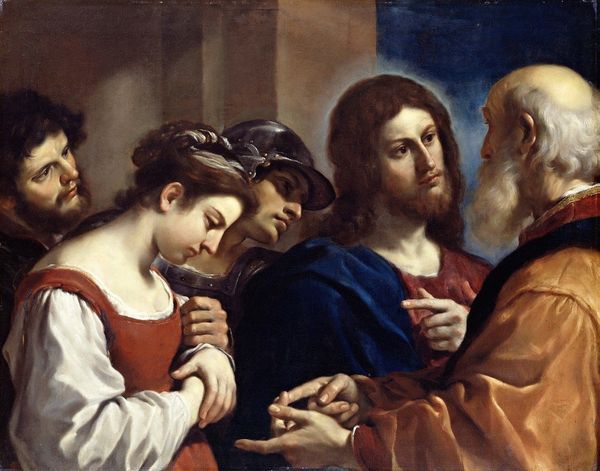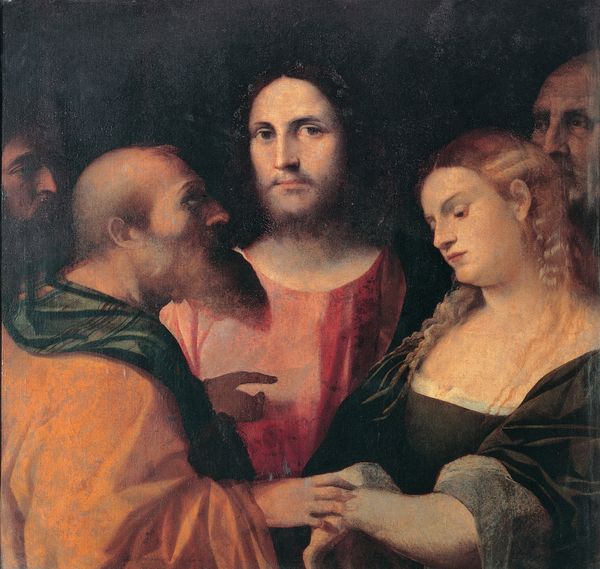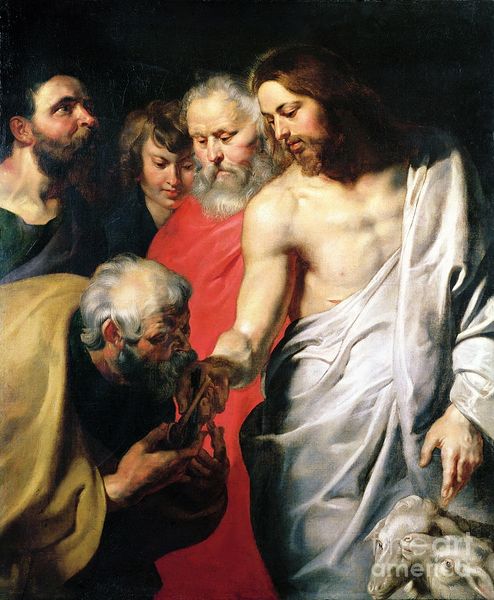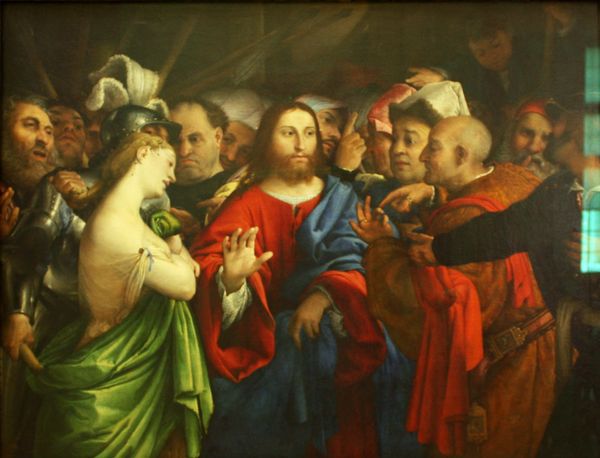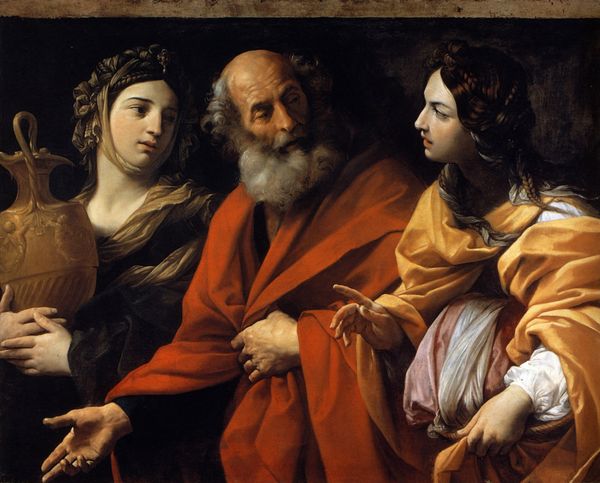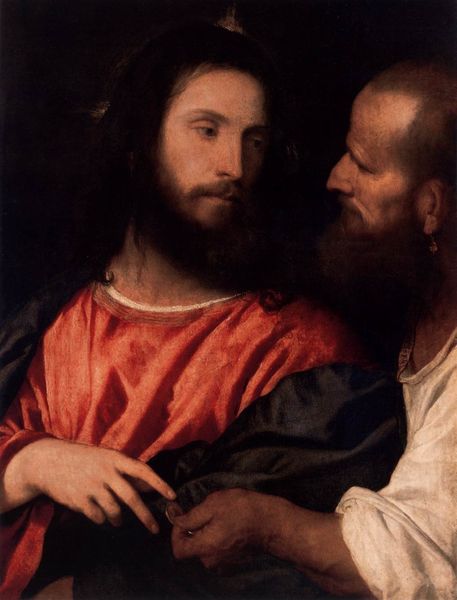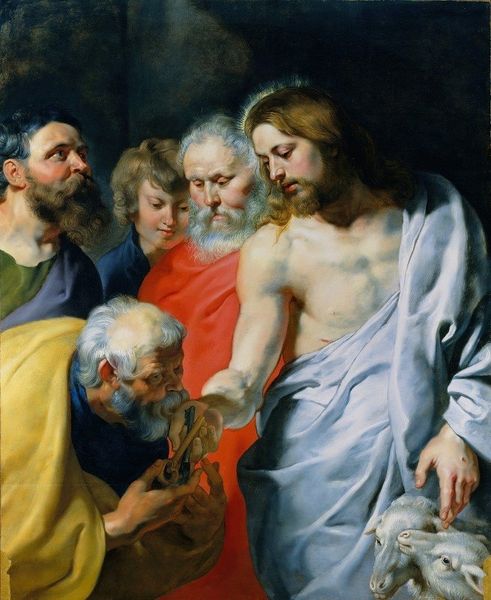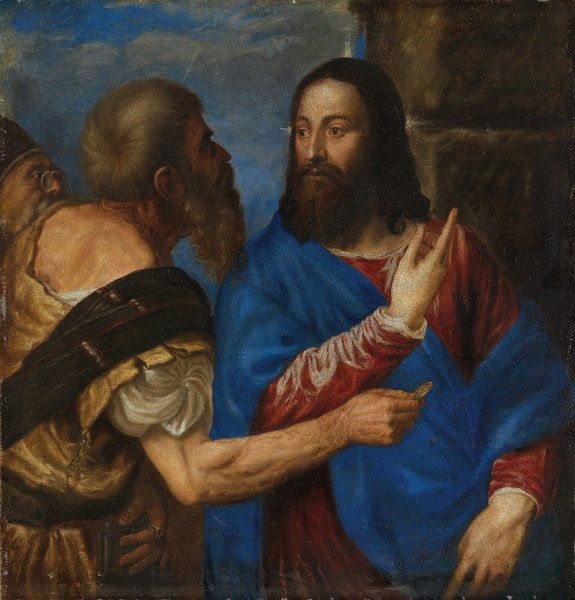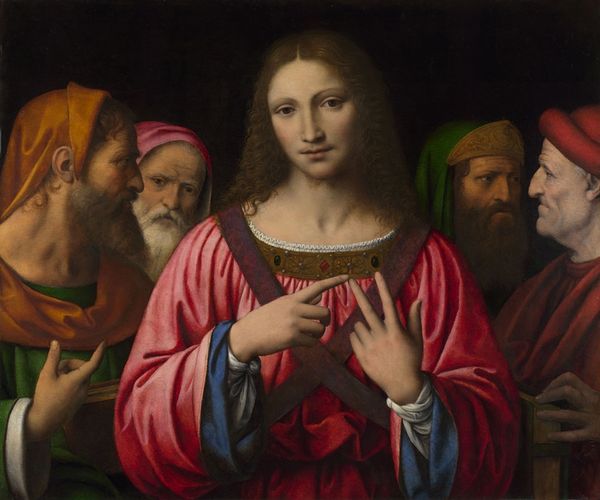
painting, oil-paint
#
narrative-art
#
painting
#
oil-paint
#
figuration
#
christianity
#
history-painting
#
northern-renaissance
Dimensions: 83 x 121 cm
Copyright: Public domain
Curator: Lucas Cranach the Elder's oil painting, "Christ and the Adulteress," completed in 1532, depicts a tense biblical scene, currently residing here at the Museum of Fine Arts. Editor: Immediately, what strikes me is the disparity in expression. The woman’s face is etched with shame and the surrounding figures, disgust – yet, Christ is the only calm in this sea of condemnation. Curator: The use of oil on panel offered Cranach control over detail and blending, allowing for those starkly contrasting facial expressions you mentioned. Consider how this medium, prevalent in the Northern Renaissance, facilitated not just aesthetics, but also communicated moral stances within Reformation society. Editor: It’s interesting how the unforgiving, harsh expressions feel almost caricatured. There's a tension there. It's as if Cranach exaggerates their flaws to highlight Christ's compassion—a beacon against the hypocrisy. The dark background amplifies it, really pushing those figures into sharp relief. Curator: And remember that Cranach was a court painter to the Electors of Saxony, ardent supporters of Martin Luther. Therefore, this piece becomes not only a narrative, but a visual sermon aligned with Reformation theology – a statement about grace versus judgment. It utilizes printmaking traditions, in line with Luther’s media strategy too. Editor: It also says something about our own culture. Looking at it, it feels timely because we haven’t quite grown out of finding such profound satisfaction from moral grandstanding and shaming... And yet, looking at Christ, at that extended hand and expression… It offers an alternative that's equally timeless, it’s challenging. Curator: Right. The materials and the manner in which Cranach employed them provided access to and supported very particular religious ideas, making art of this era active propaganda, of a sort. Editor: It definitely gave me pause to examine the current cultural fixation on judgement! Thanks for this thoughtful and materialist view of a timeless masterpiece, it definitely reframed my feelings toward "Christ and the Adulteress".
Comments
No comments
Be the first to comment and join the conversation on the ultimate creative platform.

